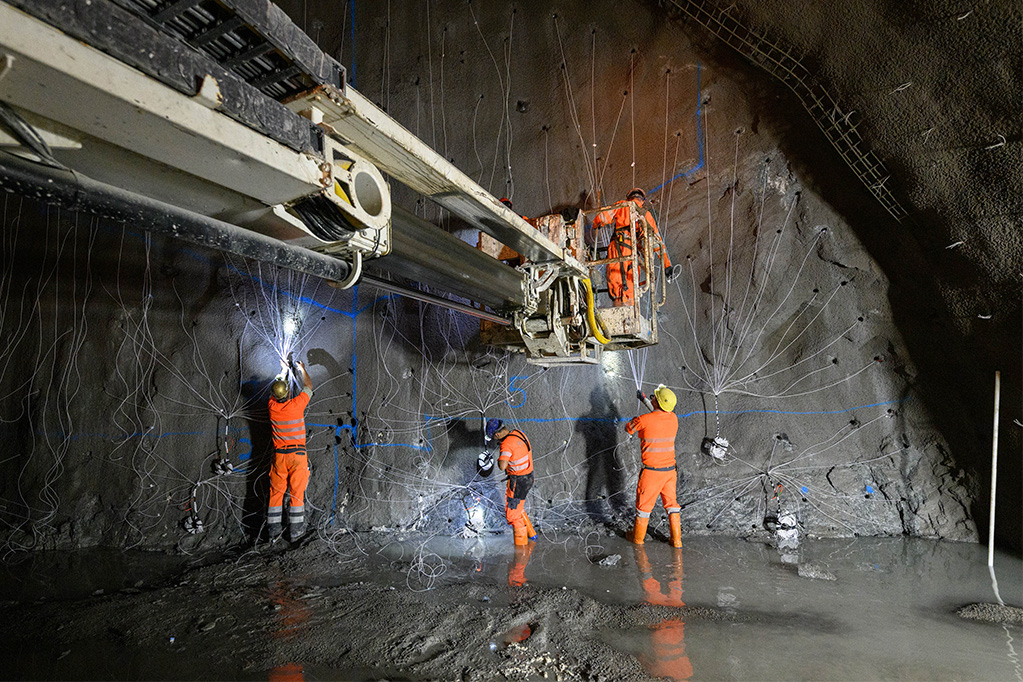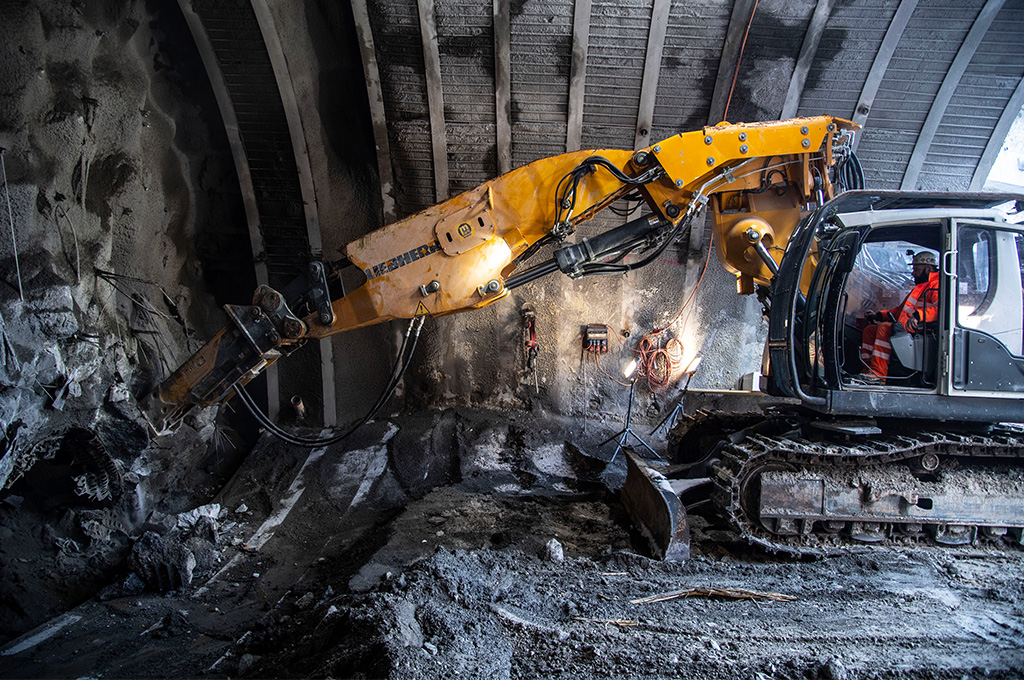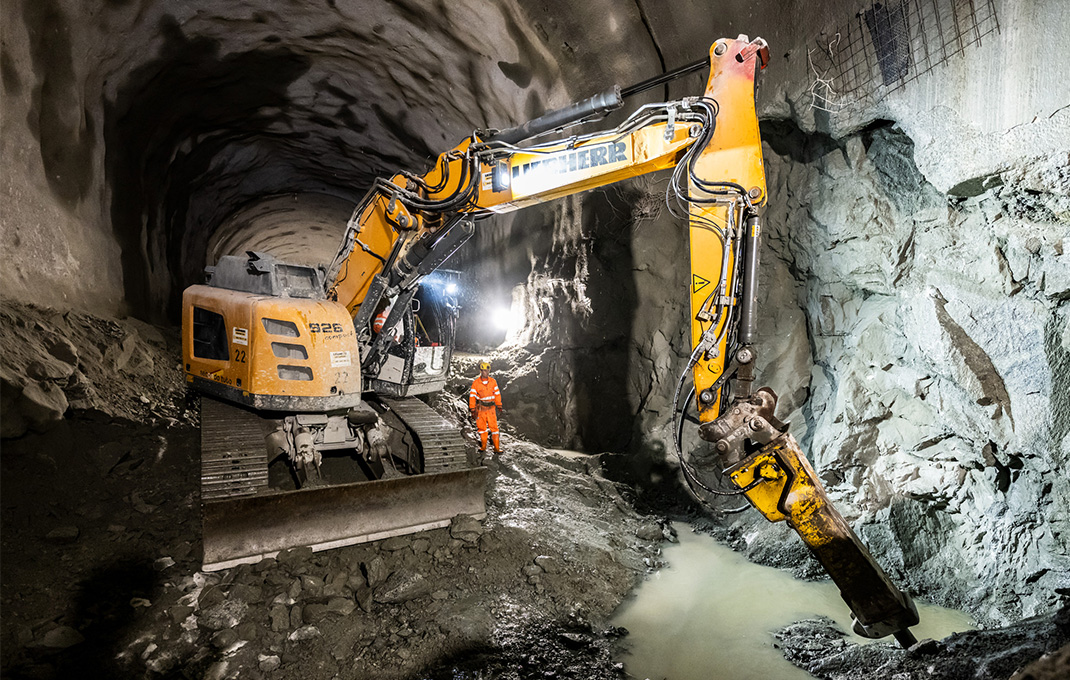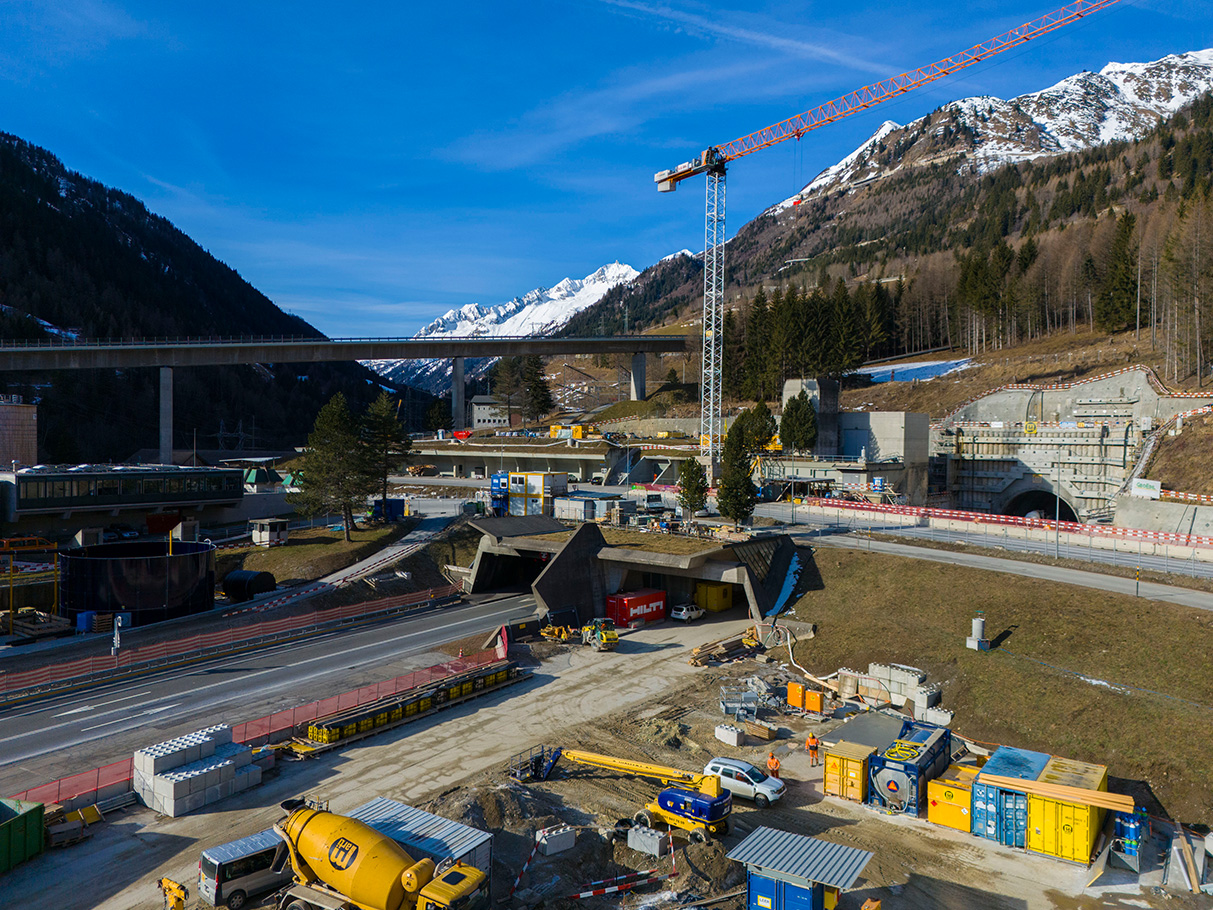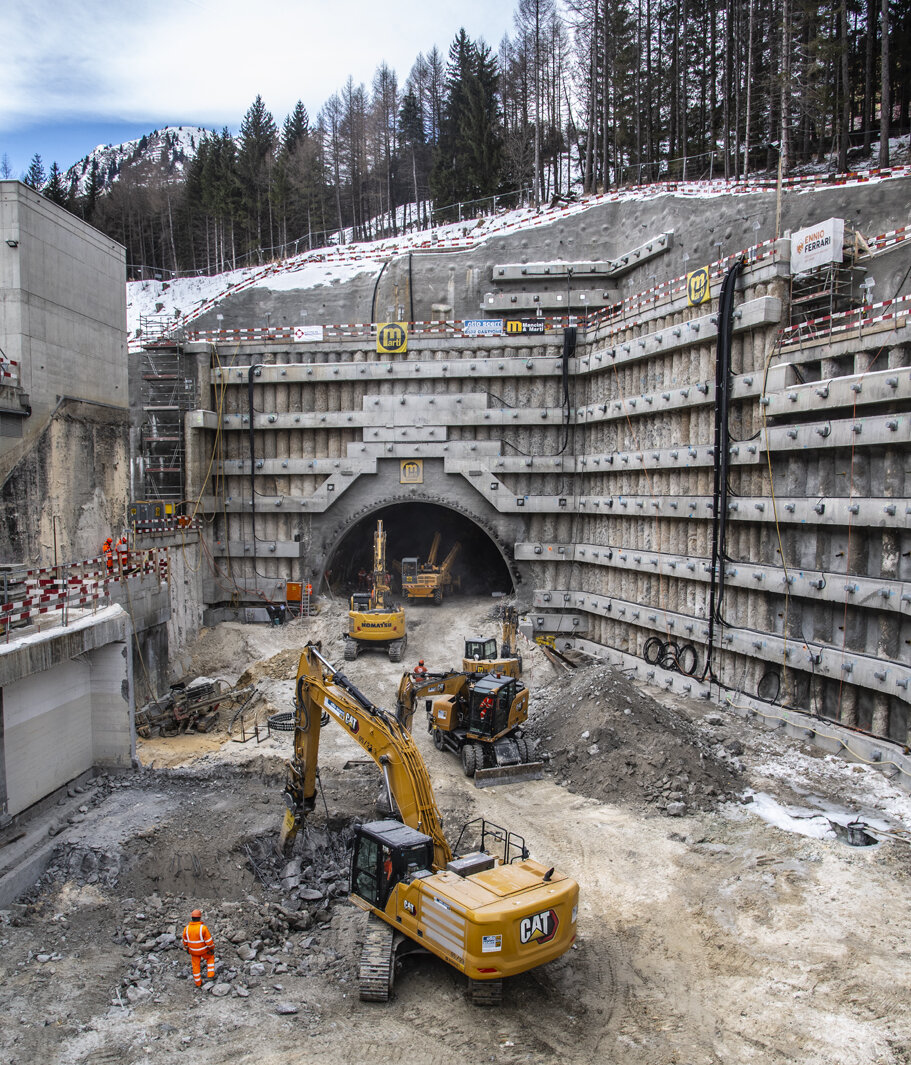
AUTHOR EUGENIO SAPIA,
FEDERAL ROADS OFFICE (ASTRA)
Since its opening in September 1980, the Gotthard road tunnel has been a central artery for the economy, trade and tourism in Switzerland and throughout Europe. In order to ensure its long-term functionality and safety, the Federal Roads Office FEDRO must renovate the tunnel by 2035 at the latest. This will require the entire tunnel to be closed for several years. A new, second tube will enable this important axis to remain open throughout The Swiss electorate approved the construction of this second tube on February 28, 2016.
Technical details of the new tube
The new tunnel tube will be built 70 meters east of the existing one and is also 16.9 kilometers long. The existing service and infrastructure tunnel runs between the two tubes. Two tunnel boring machines will be used to drive the second tube from Göschenen in the north and Airolo in the south. This creates the round tunnel profile with a diameter of 12.3 meters. Together with the emergency lanes, the carriageway of the new tube is eight meters wide. Lines for tunnel operation and communication as well as a new high-voltage line from Swissgrid run under the roadway. The exhaust air ducts are located above the roadway. In addition, five new underground ventilation centers will be built to regulate the air in both tubes. The planning and implementation of the project are not only aimed at increasing safety, but also at acting in a sustainable and environmentally conscious manner. Of a total of 7.4 million tons of excavated material, 7.2 million tons can be reused. Almost half of the material will be used for new shallow water zones in Lake Uri near Flüelen. A quarter will be used for terrain modeling and covering the freeway in Airolo. Around another quarter will be processed into aggregates for concrete, which will be used for the inner lining of the new tube and the renovation of the old one.
The timetable and the costs
The total costs for the construction of the second Gotthard road tunnel amount to around 2.14 billion Swiss francs. Construction of the second tube began in spring 2020 with the first preparatory work. Construction is expected to take ten years. Work is currently focusing on the final preparations for the main drive with the tunnel boring machine. To this end, the starting tube is currently being excavated and the infrastructure for materials management is being set up. In August, excavation work will begin on the Mesozoic and Guspis geological fault zones, each around 300 meters long. The tunnel boring machine is proving to be an unsuitable excavation method for these sections, which is why the two fault zones will first be excavated using conventional means. To this end, two four and five-kilometre-long access tunnels to the fault zones have been built since 2022.
When will it be possible to drive through the new tunnel?
From February 2025, the two tunnel boring machines will begin their journey through the imposing rock masses of the Gotthard massif. The plan is for the two tunnel construction teams to meet in the middle of the Gotthard in summer 2027 to celebrate the breakthrough. The first vehicles should be able to drive through the new tube in 2030. FEDRO will then renovate the first tube for three years. Once the renovation is complete, both tubes will be available to road users in 2033. Traffic will then continue to flow through the Gotthard in a single lane without any increase in capacity. But now in two separate tubes - a plus for safety.
